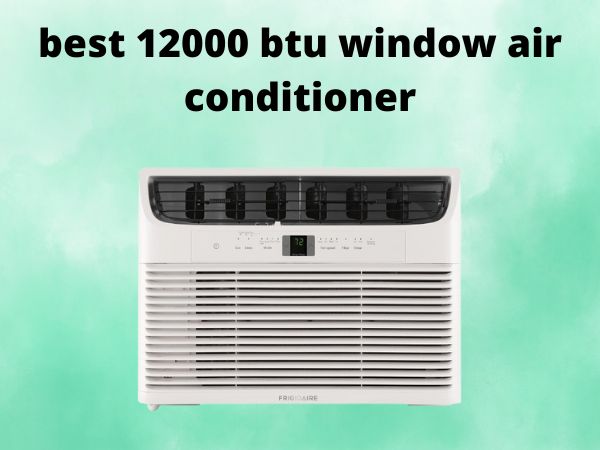Portable Air Conditioners Reviews [In 2025]
Table of Contents
BLACK+DECKER Smart Portable Air Conditioner Review: A Comprehensive Analysis
When the summer heat becomes unbearable and you need a cooling solution that doesn’t require permanent installation, portable air conditioners emerge as the go-to choice for many homeowners. In this detailed review, we’ll examine the BLACK+DECKER Smart Portable Air Conditioner (BPACT12WT), a 12,000 BTU unit designed to cool rooms up to 550 square feet. This smart-enabled device promises convenience, efficiency, and modern connectivity features that set it apart in the competitive portable air conditioner market.
Overview
The BLACK+DECKER BPACT12WT represents a modern approach to portable cooling solutions. This Wi-Fi-enabled unit combines traditional air conditioning functionality with smart home integration, allowing users to control their comfort through smartphone apps or voice commands via Amazon Alexa and Google Assistant. With its 12,000 BTU ASHRAE rating (8,000 BTU SACC), this portable air conditioner targets medium-sized rooms while maintaining a relatively compact footprint of 16.5″ x 11.7″ x 27.9″.
What makes this unit particularly appealing is its three-in-one functionality, serving not just as an air conditioner but also as a dehumidifier and fan. This versatility means you’re essentially getting three appliances in one, potentially saving both space and money. The unit weighs 52.9 pounds, which, combined with integrated carry handles and four castor wheels, makes it genuinely portable despite its substantial cooling capacity.
Specifications
Cooling Capacity: 12,000 BTU ASHRAE (8,000 BTU SACC)
Room Coverage: Up to 550 square feet
Dimensions: 16.5″ x 11.7″ x 27.9″
Weight: 52.9 pounds
Noise Level: 52 decibels
Dehumidification Tank: 0.8 liters
Window Kit Compatibility: 20.5″ to 59″ openings
Smart Features: Wi-Fi connectivity, app control, Alexa and Google Assistant compatible
Operating Modes: Cooling, dehumidifying, fan-only
Special Features: Follow Me remote, Sleep Mode, 24-hour timer
Pros
Smart home integration with voice control capabilities
Three-in-one functionality offers excellent versatility
Relatively quiet operation at 52 decibels
Easy installation with included window kit
Follow Me remote feature for precise temperature control
Compact size suitable for various room types
Energy-saving features including Sleep Mode and timer
Adjustable air louvers for directional cooling
Cons
Mixed customer reviews on cooling performance
Reports of water leakage issues from some users
Reliability concerns with units breaking within months
Limited placement flexibility due to exhaust hose requirements
Window installation may compromise home security
Higher price point compared to basic portable units
Some users report warm air blowing instead of cold
Customer Reviews
Customer feedback on the BLACK+DECKER BPACT12WT presents a mixed picture. Many users praise the unit’s ease of installation and appreciate its compact size, which doesn’t dominate room space. The smart features and app connectivity receive positive mentions from tech-savvy users who value the convenience of controlling their air conditioner remotely.
However, the cooling performance generates polarized opinions. While some customers report excellent cooling in their spaces, maintaining comfortable temperatures even in hot conditions, others complain about the unit blowing warm air or failing to cool adequately. One detailed review from a user with a home office filled with heat-generating electronics praised the unit’s ability to maintain 72°F in challenging conditions but ultimately returned it due to placement limitations and security concerns.
Reliability emerges as a significant concern, with multiple reports of units failing within two months of purchase. Water leakage issues also appear frequently in reviews, with customers describing water dripping from the front of the unit and tanks filling unexpectedly. These quality control issues significantly impact the overall customer satisfaction and raise questions about the unit’s long-term value.
Features
The BLACK+DECKER BPACT12WT boasts an impressive array of features that justify its position in the smart appliance category. The standout feature is undoubtedly its Wi-Fi connectivity, enabling control through dedicated mobile apps for both iOS and Android platforms. This smart integration extends to voice control compatibility with Amazon Alexa and Google Assistant, allowing hands-free operation.
The Follow Me remote control function represents thoughtful engineering, as the remote acts as a portable thermostat, ensuring the unit cools based on the temperature where you’re actually sitting rather than where the unit is placed. This feature can significantly improve comfort and energy efficiency.
Additional convenience features include a 24-hour programmable timer for automated operation, Sleep Mode that adjusts temperatures for nighttime comfort, and adjustable air louvers that provide both up/down and left/right directional control. The inclusion of a complete window installation kit with panels fitting openings from 20.5″ to 59″ ensures compatibility with most standard windows.
Buying Guide: How to Choose the Right Portable Air Conditioner
Understanding BTU Requirements
When shopping for portable air conditioners, understanding BTU (British Thermal Unit) ratings is crucial. The cooling capacity you need depends on room size, ceiling height, sun exposure, and the number of occupants. As a general rule, you need approximately 20 BTUs per square foot of space. However, add 10% for sunny rooms, 20% for kitchens, and consider additional capacity if multiple people regularly occupy the space. Remember that portable units now display both ASHRAE and SACC ratings, with SACC being the more accurate representation of actual cooling power.
Evaluating Smart Features and Connectivity
Modern portable air conditioners increasingly offer smart features that can enhance convenience and energy efficiency. Wi-Fi connectivity allows remote control through smartphone apps, enabling you to cool your space before arriving home. Voice control compatibility with platforms like Alexa and Google Assistant adds hands-free convenience. Consider whether these features align with your existing smart home ecosystem and if the added cost provides value for your lifestyle. Some units also offer scheduling capabilities and energy usage monitoring, which can help reduce electricity costs.
Installation and Placement Considerations
Before purchasing a portable air conditioner, carefully evaluate your installation options. Most units require venting through a window using an exhaust hose, which can limit placement flexibility. Measure your windows to ensure compatibility with the included installation kit. Consider the hose length and whether you can position the unit where needed while reaching a suitable window. Some situations may require purchasing extension hoses or considering alternative venting solutions like wall installations. Also, factor in the unit’s footprint and ensure adequate clearance around air intakes and exhausts.
Noise Levels and Operational Comfort
Portable air conditioners generate more noise than window or split units due to having all components in one indoor package. Noise levels typically range from 48 to 58 decibels, comparable to moderate rainfall or normal conversation. For bedroom use, look for units with sleep modes that reduce fan speeds and noise levels at night. Consider where you’ll primarily use the unit and whether noise might interfere with activities like sleeping, working, or watching television. Reading customer reviews specifically about noise can provide real-world insights beyond manufacturer specifications.
Maintenance Requirements and Long-term Value
Consider the ongoing maintenance needs of portable air conditioners when making your selection. Most units require regular filter cleaning or replacement, and many need periodic draining of condensation tanks. Self-evaporating models can reduce this maintenance burden. Evaluate the warranty coverage and the manufacturer’s reputation for customer service and part availability. While portable units generally cost less upfront than permanent installations, factor in potential energy costs, as they’re typically less efficient than window or split systems. Calculate the total cost of ownership over several years, including purchase price, estimated energy consumption, and maintenance expenses to determine true value.


